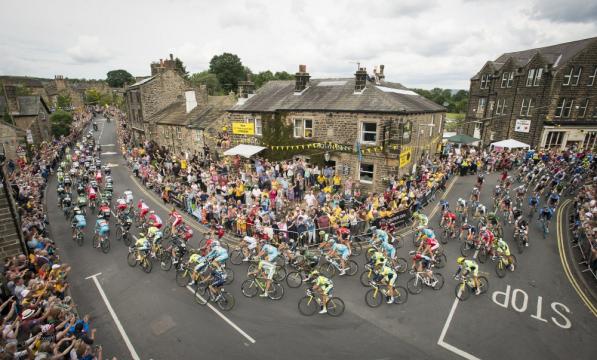Calculating the Tour de France effect

The report, Three Inspirational Days, details how spectators watched the Tour de France in their hordes, stating that almost 4.8 million people watched the Tour de France in Yorkshire, Cambridge, Essex and London. The size of the crowds at such large events are very hard to measure accurately but were estimated using television footage.
The research showed 3.3 million people watched the race in Yorkshire and 1.5 million in Cambridge, Essex and London. Of those, 4.8 million people, 1.3 million people watched from more than one location within one stage, or watched more than one stage, so the total number of ‘unique’ spectators is around 3.5 million people.
The report also counted the economic cost of the three stages of the tour. The race brought in £128 million for the host areas. Yorkshire, which hosted stages 1 and 2, netted a £102 million economic boost, with many people travelling to the county to watch the peleton up close.
Were people inspired to cycle themselves?
The three UK stages of the Tour de France proved popular to watch, but it also inspired people to have a go at cycling themselves, from adapted bike sessions to cycling lessons in school and charity bike rides for keen amateurs. The report says: "Inspiring people to cycle and be more active was a key reason for wanting to stage the event and it is clear from the evidence in the surveys that there has been a significant inspirational effect."
CTC’s Inclusive Cycling work is also highlighted in the report. CTC set up an inclusive cycling session called The Otley spectator hub. The event encouraged people of all ages and abilities to use adapted cycles. They also all watched the race together from a special viewing area.
It’s the opposite end of the spectrum to the guys that came flying through Yorkshire clad in brightly coloured Lycra.
We offered disabled people the opportunity to experience the joys of cycling, including two young friends, both with broken legs, who were overjoyed at the fact they could sit side-by-side and pedal a hand-cranked tandem; and there was a young boy with cerebral palsy who was able to ride a fixed wheel tricycle. His parents are now keen to buy him his own.
It was great to be part of the Tour de France, it was even better to play a part that exposed many more people to inclusive cycling.”
Gavin Wood, CTC Cycling Development Officer
The report collected responses using surveys. For example, 63% of the 3.5 million unique spectators (2.2 million people) felt inspired to take part in sport more often than they normally do as a result of watching the race, especially younger people (aged 16-24), 72% of whom were inspired to get more active.
Over 80% of these inspired individuals (1.8 million people) said they felt inspired to cycle more frequently. Of the UK adult population as a whole, 27% said they felt inspired to cycle more (this is equivalent to 14 million people – so some caution is needed here in interpreting this result).
The post-event survey suggested as many as 30% of spectators - almost a million people - have increased their levels of cycling, with all of the benefits brings. For those who were already regular cyclists - those who cycle once a week or more - 66% said that watching the race had had a positive impact on their intention to cycle more.
There was a similar effect on those who cycle less often, with 58% inspired to cycle more. A quarter of those who never cycled said they felt encouraged to cycle.

